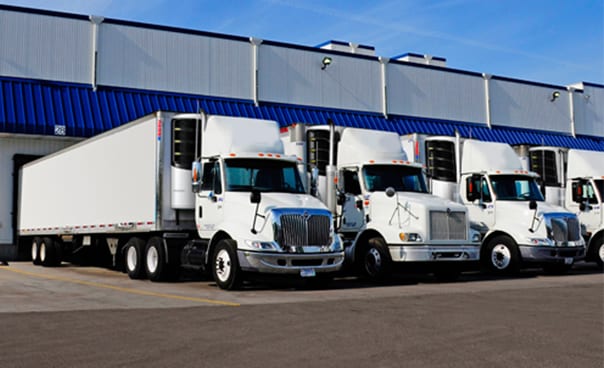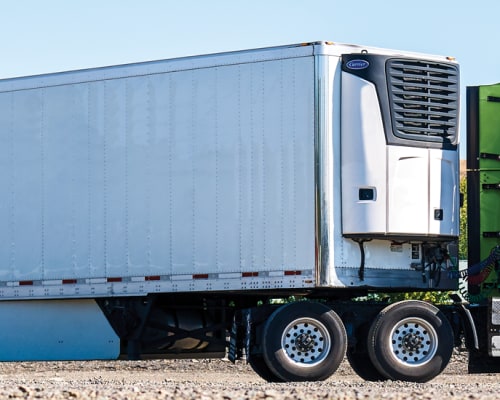Complete Guide to Leading Transport Refrigeration Companies
Wiki Article
How Refrigerated Trucks Operate to Make Certain Safe and Efficient Distribution of Perishable Item
Chilled trucks play a critical duty in the supply chain, guaranteeing that disposable goods are delivered securely and successfully. Using advanced refrigeration technologies and robust insulation, these automobiles maintain accurate temperature level control, which is vital for maintaining the quality of sensitive products.Summary of Refrigerated Trucks
Refrigerated trucks, often referred to as reefer vehicles, play a vital duty in the transport of perishable goods throughout various industries. These specific vehicles are designed to preserve particular temperature level ranges, guaranteeing that products such as fresh fruit and vegetables, dairy products, meat, and drugs remain risk-free for consumption and effective use. The procedure of refrigerated trucks is crucial in minimizing putridity and expanding the shelf life of temperature-sensitive items.Reefer vehicles are furnished with protected freight locations that can maintaining low temperatures, which can be readjusted according to the kind of products being carried. The lorries normally utilize a refrigeration device powered either by the car's engine or an independent power resource, allowing for constant temperature control throughout transit.
Along with temperature upkeep, these trucks are commonly made with advanced surveillance systems to track the internal setting, making sure compliance with health and wellness guidelines. Furthermore, chilled trucks contribute substantially to the supply chain, enabling timely distributions to dining establishments, stores, and consumers. Their pivotal function highlights the relevance of dependable transport services in today's global market, where quality is extremely important.
Key Refrigeration Technologies
Maintaining optimum temperature control in refrigerated trucks depends on several vital refrigeration innovations that boost performance and reliability. One of one of the most common systems is the vapor-compression refrigeration cycle, which utilizes a refrigerant to soak up warm from the vehicle's interior, lowering the temperature. This procedure involves a compressor, condenser, development shutoff, and evaporator, operating in tandem to circulate the refrigerant and preserve a consistent climate.An additional significant technology is the usage of eutectic plates, which save and launch thermal energy. These plates are loaded with a phase-change product that solidifies at a certain temperature level, supplying a steady cooling resource. This technique not just improves energy performance yet additionally minimizes the need for continual power supply throughout transportation.
In addition, advanced insulation materials, such as polyurethane foam, significantly enhance the thermal efficiency of cooled trucks, decreasing temperature fluctuations during filling and discharging. Some modern-day refrigerated trucks also include telematics systems, permitting real-time monitoring of temperature level and efficiency, thus ensuring conformity with safety and security criteria. With each other, these innovations ensure the secure transportation of disposable products while optimizing operational efficiency and decreasing power consumption.
Temperature Level Control Devices
Efficient temperature control systems are vital in making certain the stability of perishable products throughout transport. Refrigerated vehicles utilize advanced modern technologies to keep regular temperature ranges, protecting against perishing and making certain item safety - transport refrigeration companies.In addition, modern-day chilled trucks are furnished with digital thermostats and programmable temperature monitoring systems. These systems permit real-time tracking of internal temperature levels, offering signals if the temperature level differs the established array. This capability is necessary for compliance with wellness and safety guidelines.
Insulation likewise plays a pivotal duty in temperature level control. Top notch insulation products reduce heat exchange, protecting the wanted internal problems. Air flow monitoring within the cargo area is engineered to make certain uniform temperature level distribution, avoiding hotspots that might endanger item honesty.
Best Practices for Filling

First, it is important to pre-cool the truck before loading. This technique permits the temperature control system to maintain, important source developing an ideal atmosphere for perishable products. Next, products must be packed in a way that promotes air movement. Prevent overloading and obstructing vents, as this can bring about temperature fluctuations and hotspots.
Shelving or utilizing pallets can help in arranging items, making sure that heavier products are placed at the bottom to stop squashing lighter products. Furthermore, it is vital to segregate click for more various types of goods, particularly those with varying temperature demands, to avoid cross-contamination and wasting.
Finally, safeguarding the load with straps or webs will certainly protect against activity during transportation, therefore decreasing the danger of damage and preserving the integrity of temperature-sensitive items. By adhering to these ideal techniques, drivers can make sure safe and reliable delivery of disposable items while optimizing the efficiency of their chilled trucks.
Difficulties and Solutions in Transport
Transporting products in cooled trucks provides a number of obstacles that can influence the honesty of temperature-sensitive items. One significant concern is temperature level fluctuations, which can occur because of equipment breakdown or inappropriate filling methods. These changes can result in perishing, compromising the top quality of disposable items. Furthermore, road conditions and hold-ups can better intensify temperature control concerns, particularly during prolonged transportation times.To deal with these obstacles, executing durable tracking systems is essential. Advanced telemetry can give real-time temperature data, notifying drivers to any abnormalities. Routine maintenance of refrigeration units ensures ideal efficiency and lowers the risk of failures. Training personnel on finest loading and discharging practices can lessen the danger of temperature level discrepancies.
Another secret solution includes path optimization. Making use of general practitioners and website traffic management technologies can help drivers choose the most effective paths, minimizing transportation times and decreasing direct exposure to negative problems. Collaborating with dependable logistics companions that focus on cold chain integrity is additionally necessary for guaranteeing that products remain within needed temperature level arrays.

Verdict
In conclusion, refrigerated vehicles play a vital function in the secure and reliable transport of subject to spoiling items. Utilizing sophisticated refrigeration technologies and effective temperature level control devices guarantees that products remain within called for temperature ranges.
Report this wiki page